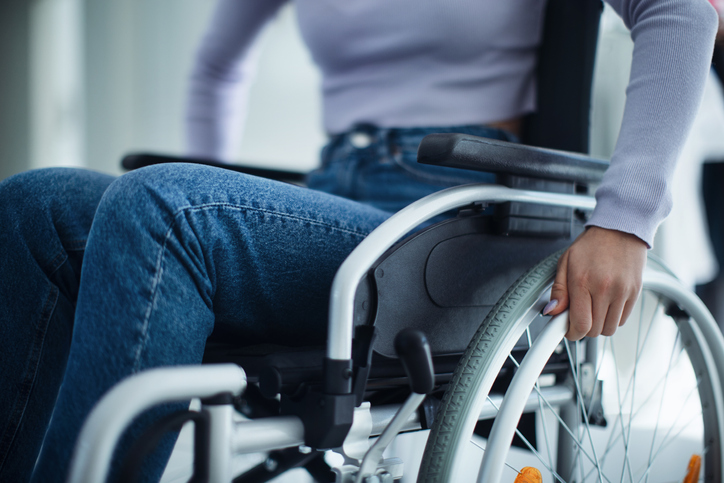
How common is Multiple Sclerosis in Australia?
From MS Australia, the prevalence of Multiple Sclerosis in Australia has increased from 103.7 per 100,000 people in 2017 to 131.1 per 100,000 people in 2021.
What is Multiple Sclerosis?
The US National Institute of Neurological Disorders and Stroke describes Multiple Sclerosis as when the immune system cells that normally protect us from viruses, bacteria, and unhealthy cells mistakenly attack myelin in the central nervous system (brain, optic nerves, and spinal cord). Myelin is a substance that makes up the protective sheath (myelin sheath) that coats nerve fibres (axons).
MS is a chronic disease that affects people differently. A small number of people with MS will have a mild course with little to no disability, whereas others will have a steadily worsening disease that leads to increased disability over time. Most people with MS, however, will have short periods of symptoms followed by long stretches of relative quiescence (inactivity or dormancy), with partial or full recovery. The disease is rarely fatal and most people with MS have a normal life expectancy.
What are the types of Multiple Sclerosis?
From the US National Multiple Sclerosis Society, MS can be divided into 4 types, or disease courses, as defined by the International Advisory Committee on Clinical Trials of MS in 1996.
They are:
- Clinically isolated syndrome- Clinically isolated syndrome (CIS) refers to a first episode of neurologic symptoms caused by inflammation and demyelination in the central nervous system
- Relapsing-remitting MS- shows clearly defined attacks of new or increasing neurologic symptoms. They are followed by periods of partial or complete recovery, or remission
- Secondary progressive MS- neurologic function worsens progressively or disability accumulates over time
- Primary progressive MS- neurologic function worsens or disability accumulates as soon as symptoms appear, without early relapses or remissions
What are some of the symptoms related to Multiple Sclerosis?
MS symptoms vary between individuals based on where the damage occurs. Mayo Clinic lists some of the common symptoms including:
- Numbness or weakness in one or more limbs that typically occurs on one side of your body at a time
- Tingling
- Electric-shock sensations occur with certain neck movements, especially bending the neck forward
- Lack of coordination
- Unsteady gait or inability to walk
- Partial or complete loss of vision, usually in one eye at a time, often with pain during eye movement
- Prolonged double vision
- Blurry vision
- Vertigo
- Problems with sexual, bowel and bladder function
- Fatigue
- Slurred speech
- Cognitive problems
- Mood disturbances
What are the causes of Multiple Sclerosis?
The UK National Health Service list some of the possible causes of MS including:
- Genes – MS isn’t directly inherited, but people who are related to someone with the condition are more likely to develop it; the chance of a sibling or child of someone with MS also developing it is estimated to be around 2 to 3 in 100
- Lack of sunlight and vitamin D – MS is more common in countries far from the equator, which could mean that a lack of sunlight and low vitamin D levels may play a role in the condition, although it’s not clear whether vitamin D supplements can help prevent MS
- Smoking – people who smoke are about twice as likely to develop MS compared with those who don’t smoke
- Teenage obesity – people who were obese during their teenage years have an increased risk of developing MS
- Viral infections – it’s been suggested that infections, particularly those caused by the Epstein-Barr virus (responsible for glandular fever), might trigger the immune system, leading to MS in some people
- Sex– women are 2 to 3 times more likely to develop MS than men; the reason for this is unclear
What help is available for Australians with Multiple Sclerosis?
From MS Australia, there are many different ways to treat multiple sclerosis (MS), and you might find some treatments work better than others.
Medications for MS fall broadly into three groups: those that reduce the risk of relapses and disease progression, those that treat an active relapse or those that can help to ease specific symptoms. The types of medications used will depend on several factors, including the type of MS and your circumstances.
Some available treatments include:
- DMTs, (also known as disease-modifying therapies or immunotherapies), work by modifying the activity of the immune system to slow the frequency and severity of attacks on the central nervous system. These medications are most often prescribed for people with relapsing-remitting MS, where evidence has demonstrated the greatest impact.
- Corticosteroid medication is used to reduce symptoms from an acute relapse, by easing inflammation at the affected site.
- Medications to help with specific symptoms of MS, such as treating incontinence, spasticity, pain or depression.



